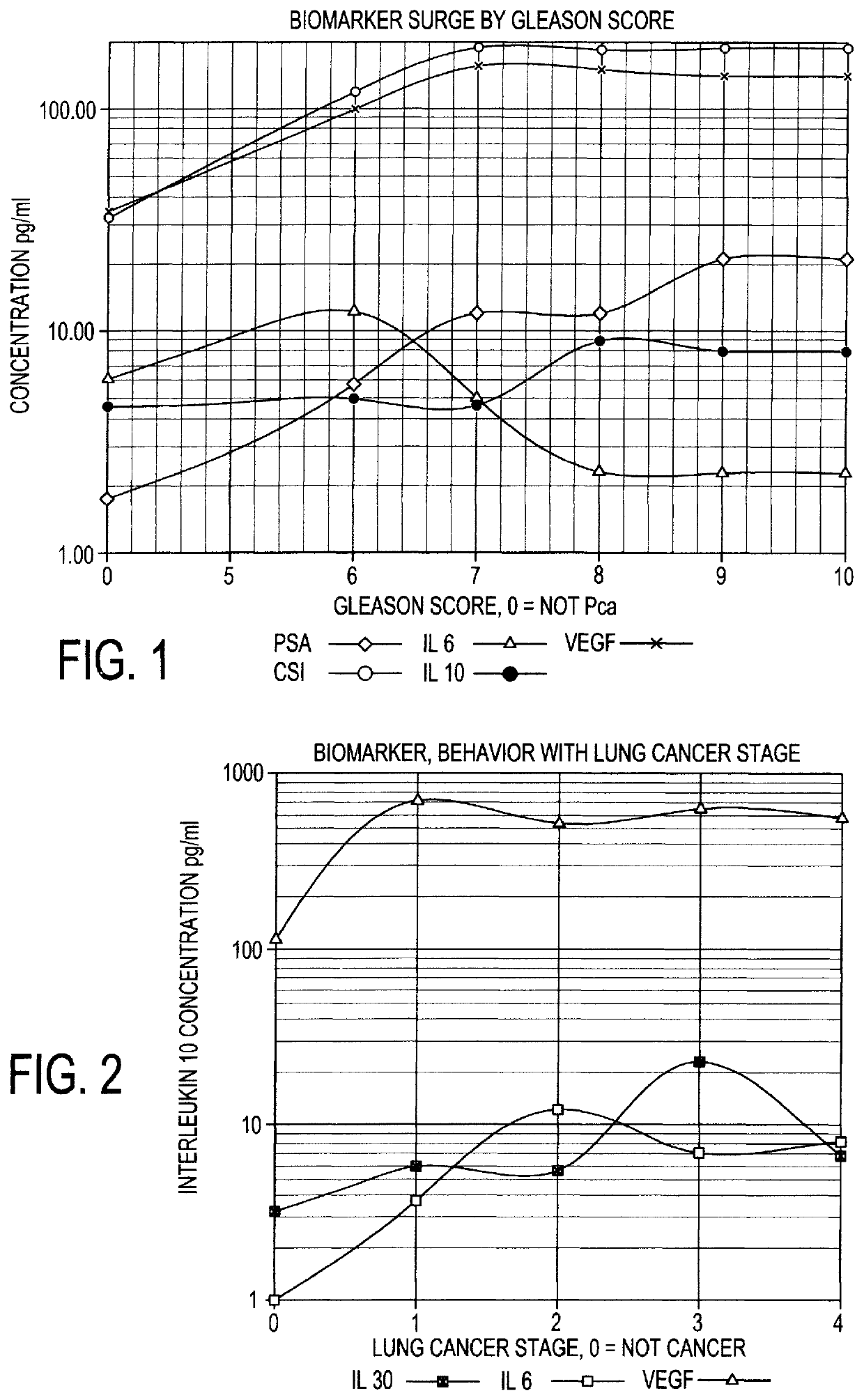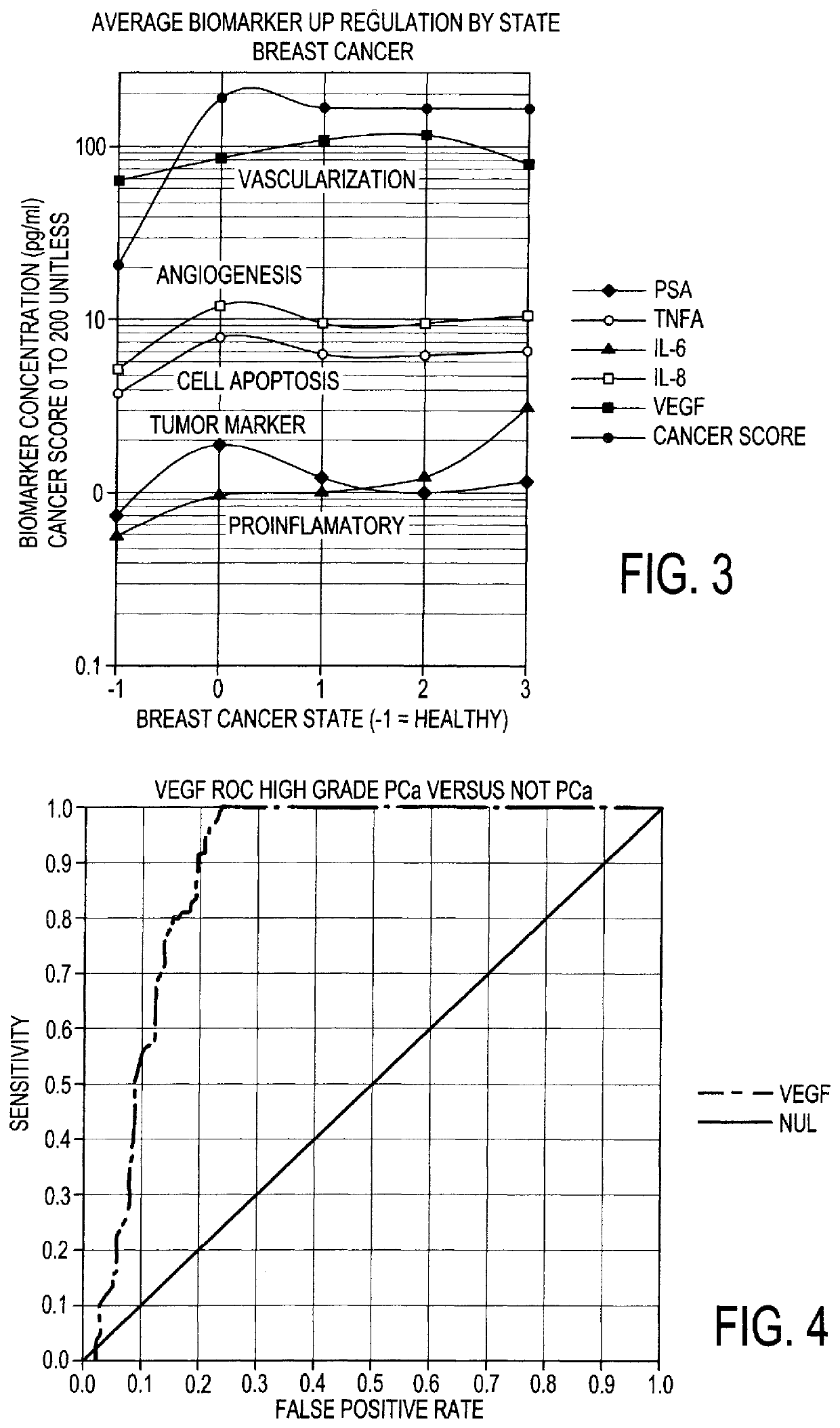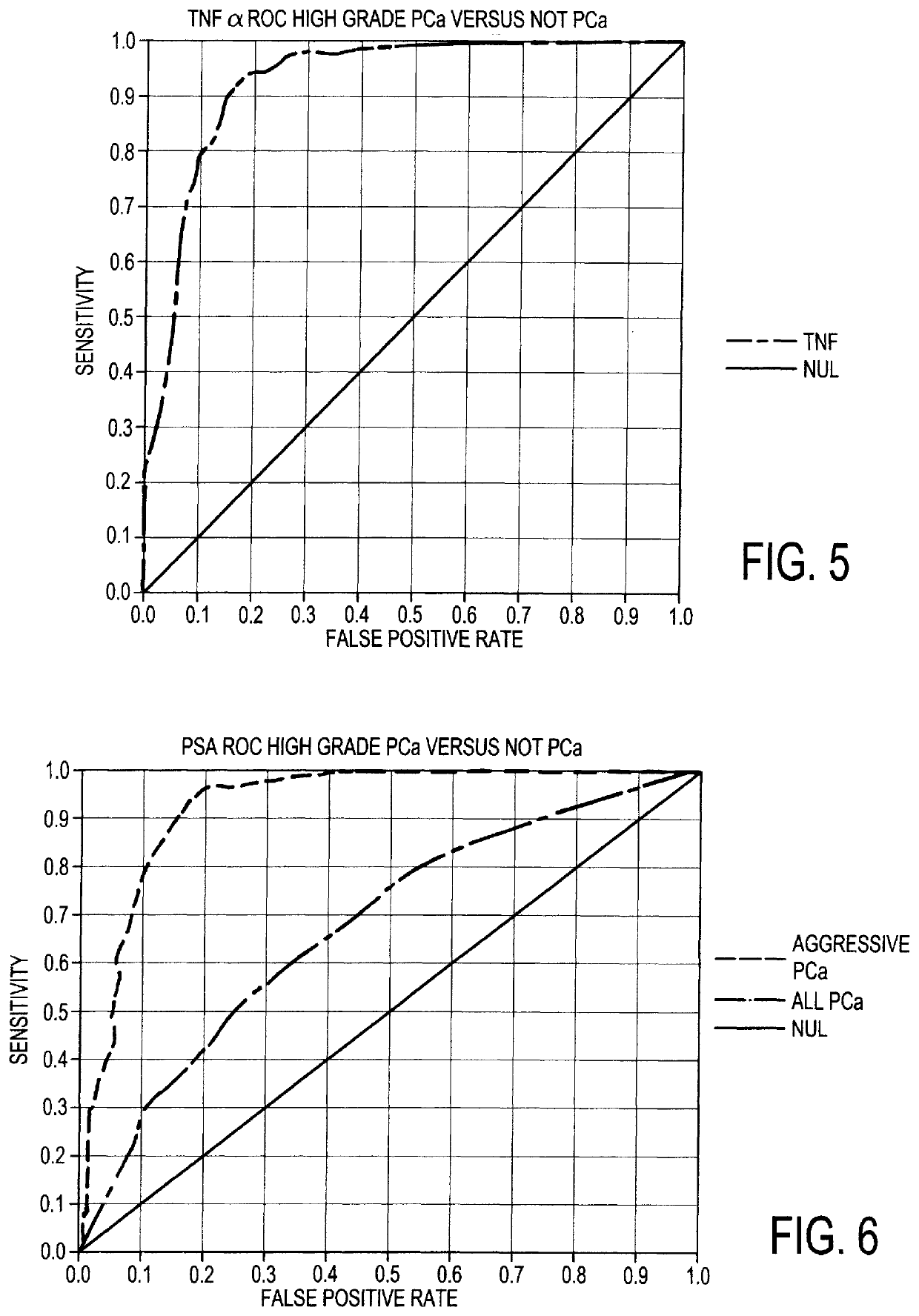Systems and methods for improving disease diagnosis using measured analytes
a technology of disease diagnosis and measured analytes, applied in the field of systems and methods for improving disease diagnosis using measured analytes, can solve the problems of high nonlinearity, high local variable outcome, and inability to improve diagnostic and analytical power in practice, so as to improve the predictive power and diagnostic accuracy of methods.
- Summary
- Abstract
- Description
- Claims
- Application Information
AI Technical Summary
Benefits of technology
Problems solved by technology
Method used
Image
Examples
example 1
Clinical Study Assessing Breast Cancer Blood Test
[0109]The performance of the OTraces BC Sera Dx test kit and OTraces CDx Immunochemistry Instrument System (www.otraces.com) was evaluated in an experiment to assess the risk of the presence of breast cancer. The test kit measures the concentrations of five very low-level cytokines and tissue markers, and uses a training set model that was developed as described above to calculate scores, CS1 and CSq, for assessing the risk of breast cancer. The proteins measured were IL-6, IL-8, VEGF, TNFα and PSA. The experiment consisted of measuring about 300 patient samples split roughly 50% between breast cancer cases diagnosed by biopsy and 50% from patients putatively considered non-diseased (or in this case not having breast cancer). Of this group, the biopsy results for 200 samples divided exactly into 50% non-disease and 50% having breast cancer disease and each group was further subdivided into specified age groupings.
[0110]The sample anal...
example 2
Use of the Meta-Variable “Age” to Improve Diagnostic Accuracy
[0117]Table 1 (below) shows the tabulated results for an 868 subject sample clinical study for breast cancer.
TABLE 1Summary of Diagnostic Accuracy for Breast CancerCorrectlyFalselyConditionCohortIdentifiedUncertainIdentifiedBreast Cancer49598.0%1.0%1.0%Healthy Women37398.0%0.5%1.5%
[0118]Table 2 (below) shows the comparison of various methods for the correlation calculation. The standard method, logistic regression, showed only an 82% predictive power. Standard Spatial Proximity analysis improved on this, yielding about 88% predictive power in linear form and 90% predictive power in logarithmic form. The methods described in this specification using the meta-variable and weighting approaches, topology stability conditioning, immune system response grouping and weighting conditioning for assay performance—coupled with instability testing of blind samples and incongruent algorithm correction—yielded greater than 97% predictiv...
example 3
Use of the Meta-Variable “Age” to Improve Diagnostic Accuracy in an Ovarian Cancer Study
[0119]Table 3 (below) shows the results of a study of 107 women with ovarian cancer or not having ovarian cancer using the meta-variable method described in the embodiments herein. This study did not use all of the predictive power improvements described in this specification but still achieved a relatively superior predictive power of about 95%.
TABLE 3Summary of Diagnostic Accuracy for Ovarian CancerCorrectlyFalselyConditionCohortIdentifiedUncertainIdentifiedOvarian Cancer5194.1%3.9%0.0%Healthy Women5696.4%3.6%0.0%
PUM
 Login to View More
Login to View More Abstract
Description
Claims
Application Information
 Login to View More
Login to View More - R&D
- Intellectual Property
- Life Sciences
- Materials
- Tech Scout
- Unparalleled Data Quality
- Higher Quality Content
- 60% Fewer Hallucinations
Browse by: Latest US Patents, China's latest patents, Technical Efficacy Thesaurus, Application Domain, Technology Topic, Popular Technical Reports.
© 2025 PatSnap. All rights reserved.Legal|Privacy policy|Modern Slavery Act Transparency Statement|Sitemap|About US| Contact US: help@patsnap.com



